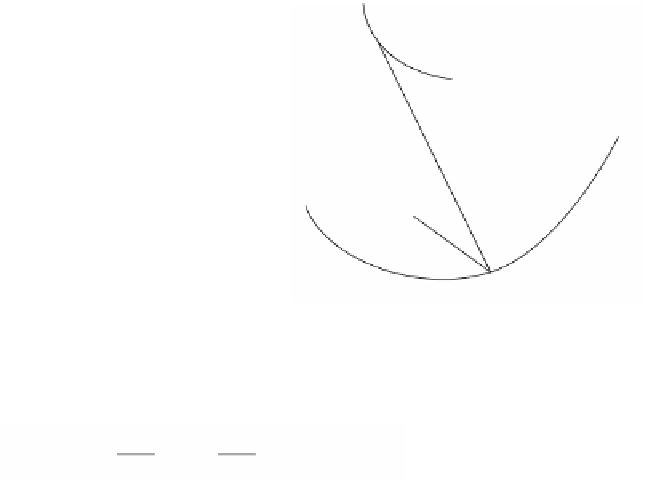Graphics Reference
In-Depth Information
Figure 9.13.
Parameterizing an evolute.
q(s)
C*
N(s)
C
B(s)
T(s)
p(s)
9.6.3. Theorem.
The evolutes of a curve p(s) are precisely those curves that admit
a parameterization of the form
(
)
1
1
s
()
=
()
+
()
+
Ú
()
qs
ps
Ns
cot
t
+
cBs
(9.29)
()
()
k
s
k
s
0
for some constant c.
Proof.
Differentiate equation (9.28) and use the fact that q¢(s), being tangent to
C
*,
is a multiple of q(s) - p(s). See [Lips69].
9.6.4. Corollary.
The evolutes of a planar curve p(s) are precisely those curves that
admit a parameterization of the form
1
c
s
()
=
()
+
()
+
()
qs
ps
Ns
Bs
()
()
k
s
k
for some constant c. The parameterization will be regular if k¢(s) is nonzero.
The case of an evolute of a planar curve for which the constant c is zero is espe-
cially interesting. That evolute actually lies in the same plane as the curve and is the
only
evolute of the curve in that plane.
Definition.
Assume that the planar curve p(s) has nonzero curvature. The evolute
1
()
=
()
+
()
qs
ps
Ns
(9.30)
()
k
s
is called the
plane evolute
of p(s).
The plane evolute is the locus of centers of curvature of p(t). Because it is unique,
the adjective “plane” is often dropped and one talks about “the” evolute of the curve
in that plane.






